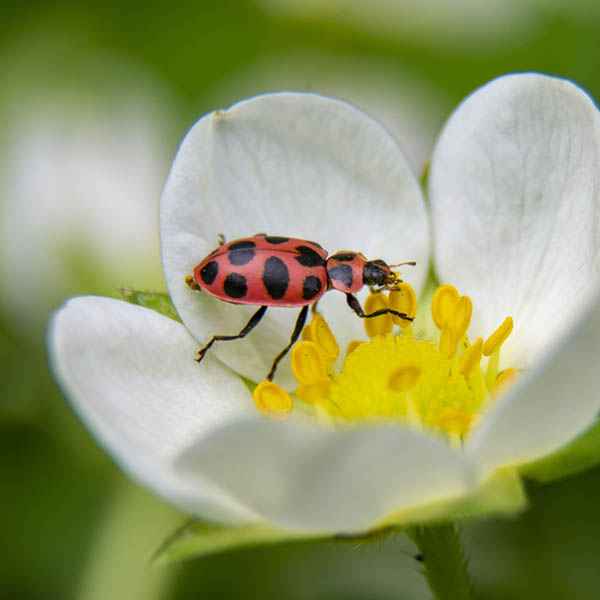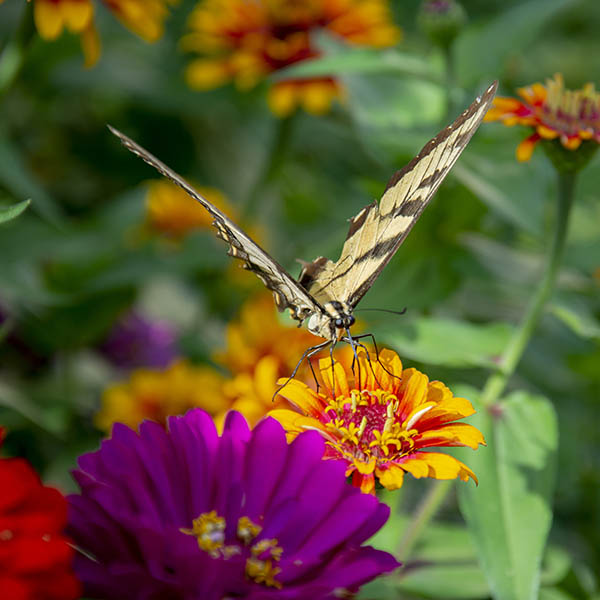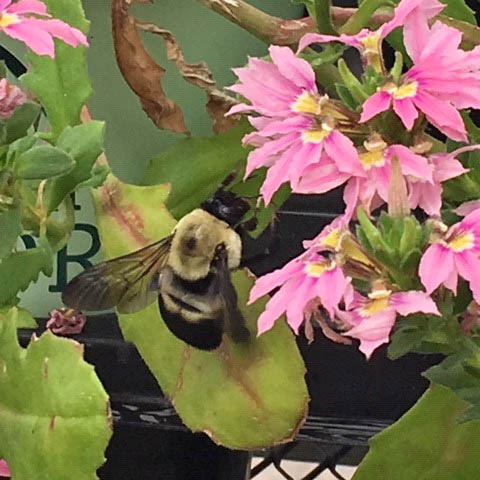Pollinator Research
Pollinators have complicated relationships with the natural world, one that often defies our understanding and tests our scientific capabilities. Luckily, the brilliant scientists at the University of Illinois are always up for a challenge, and an extraordinary amount of research conducted in the University system touches on some aspect of pollinators or the services they provide. Below, read about the big three “pollinator” labs. Continue reading to see how the work of many other researchers at the U of I, from botanists to soil scientists, impacts our knowledge of pollinators.

The Pollinator Labs
These labs work with pollinators every day. At any given time, you can expect each of the researchers leading these labs to be mentoring multiple graduate students as they conduct experiments on pollinators or pollination services. The contributions of these labs to the scientific understanding of pollinators is extraordinary in both volume and value.

Dr. Gene Robinson
Dr. Robinson’s lab studies honey bee social behavior. More specifically, the lab uses genomics to understand how bee behavior is regulated. Understanding the molecular basis on which honey bee social behavior operates creates a window into many neurological and evolutionary principals, and Dr. Robinson’s lab is widely recognized for its contributions to the understanding of brain functioning and social behaviors.
Dr. May Berenbaum
Dr. Berenbaum is the head of the Entomology department and holds the National Medal of Science, which she was awarded in 2014. Her lab’s research is centered on plant-insect interactions and has published works on topics ranging from how insects induce plants to make toxic chemicals, to the ways that honey bees use plant phytochemicals to protect themselves from toxic fungicides. Dr. Berenbaum’s research has deepened our scientific understanding of plant phytochemicals and their impacts on honey bees and other insects. She has also published works for a broader audience, including several books.
Dr. Alex Harmon-Threatt
Dr. Harmon-Threatt’s lab studies ecological topics that impact pollinator conservation and habitat restoration. Lately, much of the lab’s focus has been on the impacts of clothianidin (a neonicotinoid pesticide) on bees, but projects in the lab touch on topics as diverse as the impacts of forest management on different bee families to the uptake of pesticides by prairie plants near agricultural sites. Dr. Harmon-Threatt’s research has been immensely valuable to the study of pollinator ecology.
Dr. Adam Dolezal
Dr. Dolezal’s lab studies how environmental stressors like pesticide and disease impacts bees. Projects within the lab often seek to understand honey bee disease ecology, but work within the Dolezal lab has also included honey bee competition with native bees, impacts of agricultural pollinator conservation, and the effects of pollinator habitat at solar facilities. Dr. Dolezal helped develop the Illinois solar pollinator habitat scorecard and his research is vital.
More Pollinator Research
While a great deal of pollinator research is conducted by the three pollinator labs listed above, other University of Illinois scientists have explored the topic as well. “Pollinators” are a diverse grouping of insects, and many researchers conduct experiments that touch on pollinators or the services they provide. Here are a few highlights from these researchers and the departments from which they operate.

The Department of Entomology
As one might expect, this is the department that houses most of the University’s pollinator research. The “big three” labs are all housed within the department, but most of the department’s researchers conduct, or collaborate on, at least one experiment that touches on pollination. See a full list of Entomology faculty and affiliates. Several researchers have ongoing projects.
Dr. Marianne Alleyne works on bioinspiration. This is when scientists analyze the natural world for answers to modern problems. (Velcro is a material bio-inspired by burdock seeds sticking to clothing and hair). Among other projects, Dr. Alleyne has used honey bees as models for developing group decision-making algorithms.
Emeritus faculty—Some recently retired faculty members have made notable contributions to the scientific understanding of pollinators.
- Dr. Hugh Robertson’s work was instrumental to the Honey Bee Genome Project, which published the complete honey bee genome in 2006.
- Dr. Sydney Cameron studied bumble bee phylogenetics (how different bumble bees are related to each other on the tree of life) and continues to make invaluable contributions to our understanding of bumble bee decline.
The Illinois Natural History Survey
A great deal of the foundational knowledge on pollinators depends on historical surveys and inventories of the natural world. The Illinois Natural History Survey (INHS) continues to operate surveys such as the Critical Trends Assessment program, which has assessedplant species at over 600 randomly-selected sites in Illinois since 1997. They also operate surveys for the Illinois department of transportation, ensuring that infrastructure projects do not wantonly disrupt valuable or rare plant and animal communities.
Dr. David Zaya is a plant ecologist who works on the Critical Trends Assessment Program. He also conducts research on monarch butterflies under the I-Pollinate community science program, which seeks to find how monarch egg laying and caterpillar growth responds to different garden and landscape variables.
Dr. Brenda Molano-Flores does research focusing on rare plants and has done work documenting the pollinator communities that interact with those plants. She’s very interested in new ways of monitoring plant-insect interactions and has published work using camera traps to monitor pollinator visitations. She is currently exploring the use of eDNA to detect pollinators. Dr. Molano-Flores is also an NRES and Dept. of Entomology affiliate.
Dr. Tommy McElrath manages the INHS insect collection. This collection is a massive repository of insect specimens used in scientific research. Within this collection are many thousands of pollinators, including 155,000 bees, ~100,000 moths, and ~150,000 butterflies. The collection also houses 300,000 flies and 1,000,000 beetles, many of which are also pollinators.
Dr. Jason L Robinson does Rusty patched bumble bee monitoring as part of his work on Illinois Department of Transportation projects. He’s interested in conflicts between the regulatory oversight of the Endangered Rusty patched bumble bee and the bee’s own biology—a topic that may have increased relevance as insect populations continue to decline.
Jamie Ellis and Nathan Hudson manage the many of the natural areas at the University of Illinois Urbana Champaign in which pollinator research takes place. Without their careful stewardship, pollinator researchers would have a much, much harder time finding suitable habitat for their experiments.
The Department of Natural Resources and Environmental Science
NRES houses researchers working on a diversity of environmental topics that range from carbon cycles to backyard birds. We encourage you to visit their “Research Areas” website for an appropriate understanding of the wide breadth of the department’s research. Many of the scientists in this department have work that touches on pollinatorsin some way, below are a few highlights.
Dr. Mark A Davis is an NRES affiliate and a conservation biologist at INHS. His work with pollinators is on Environmental DNA (eDNA), which is trace DNA left in the environment by animals. While this kind of genetic analysis was largely developed for aquatic environments, Dr. Davis is interested in applying it to flowers to understand what pollinators have been visiting them.
Dr. Tony Yannarell studies microbial ecology, with a focus on microorganisms that affect plant and soil health. He is currently collaborating with Dr. Harmon-Threatt on an experiment in an ongoing prairie restoration, where they are looking into the soil properties of the site along with interactions between microbes, the plants, and ground nesting bees.
Dr. Jim Miller conducts research focused on reconciling human land use with the necessities of conservation. Pollinator research in the Miller lab has included work on native bees in agricultural pollinator habitats and the impacts of urbanization on pollinator community composition.

